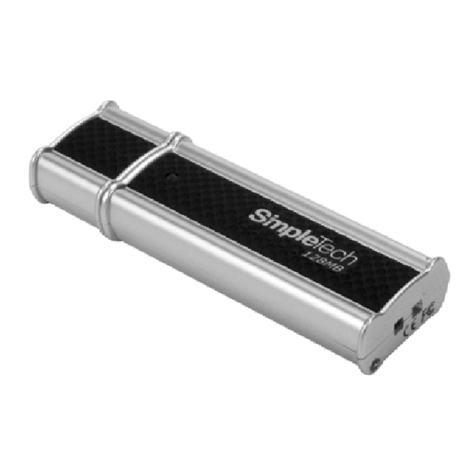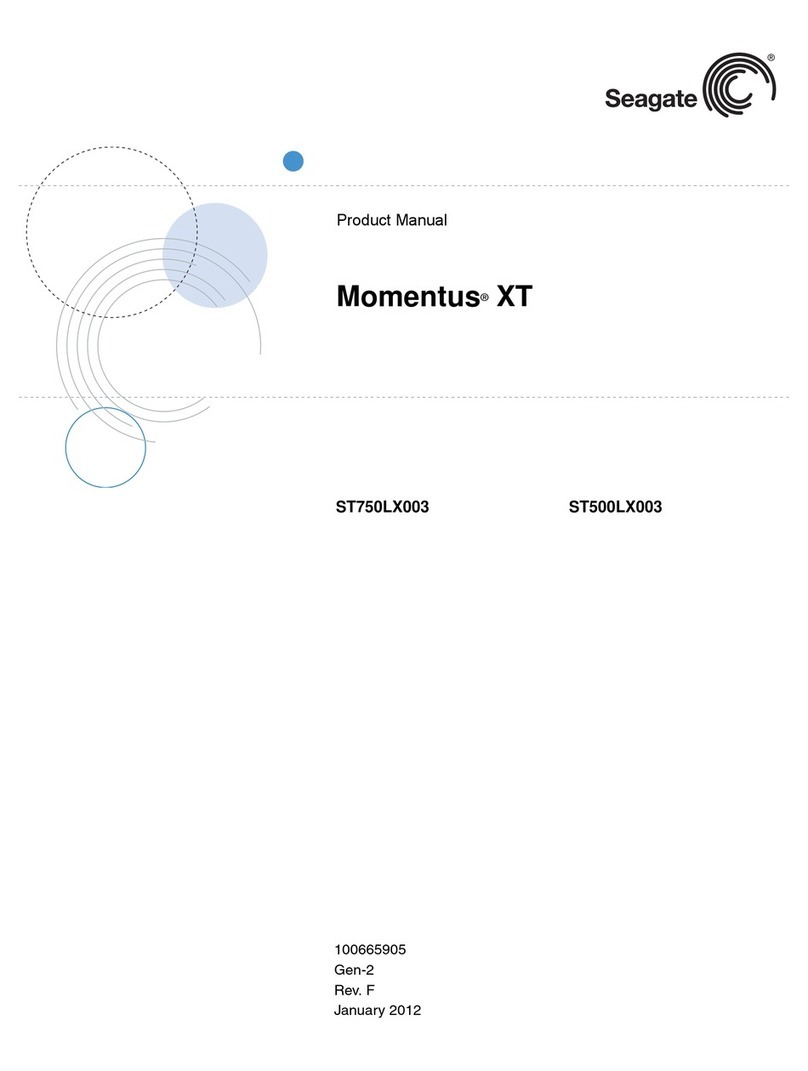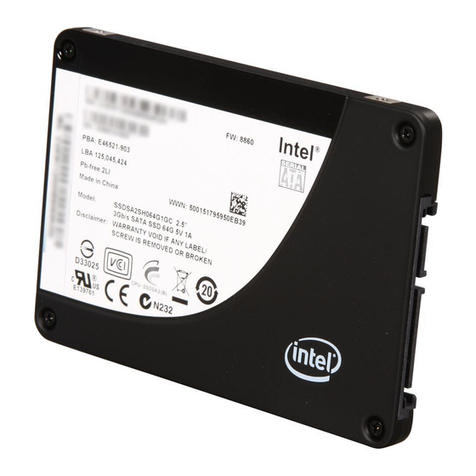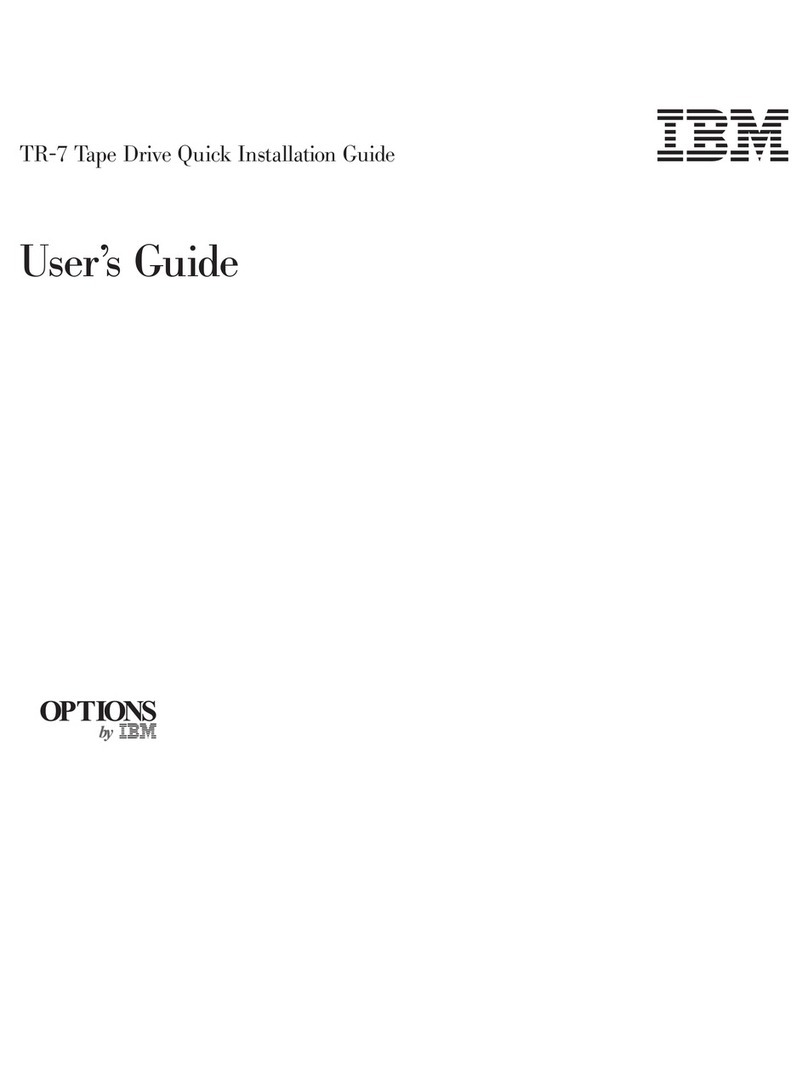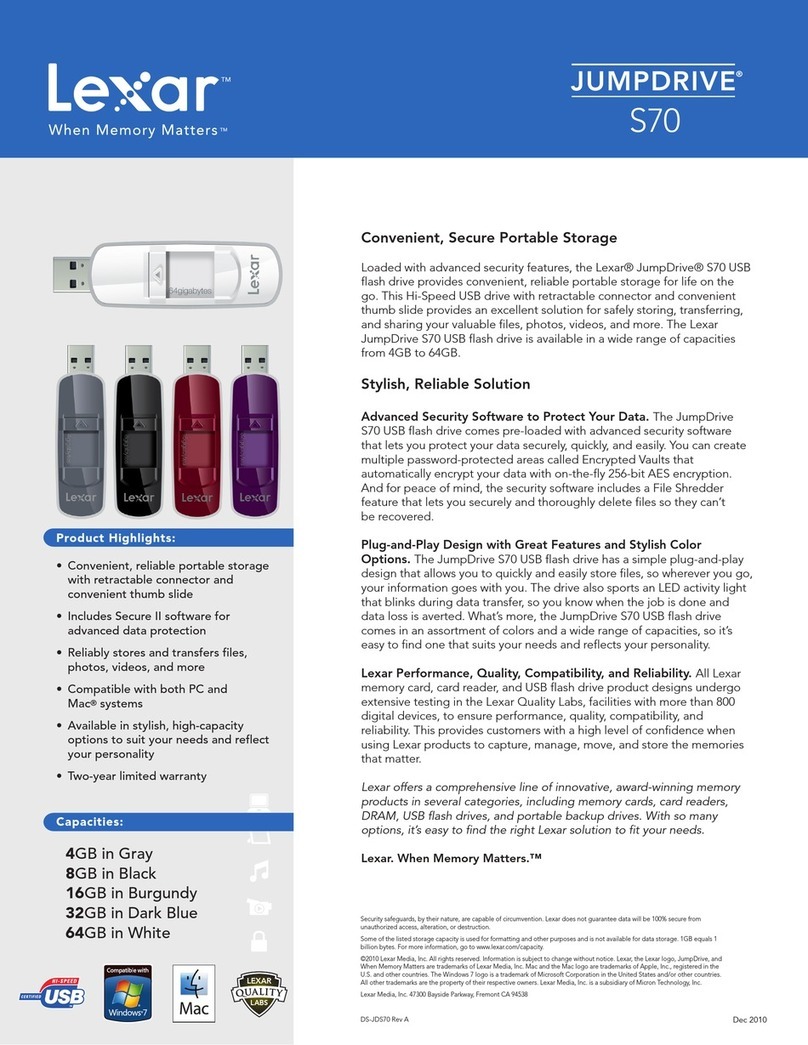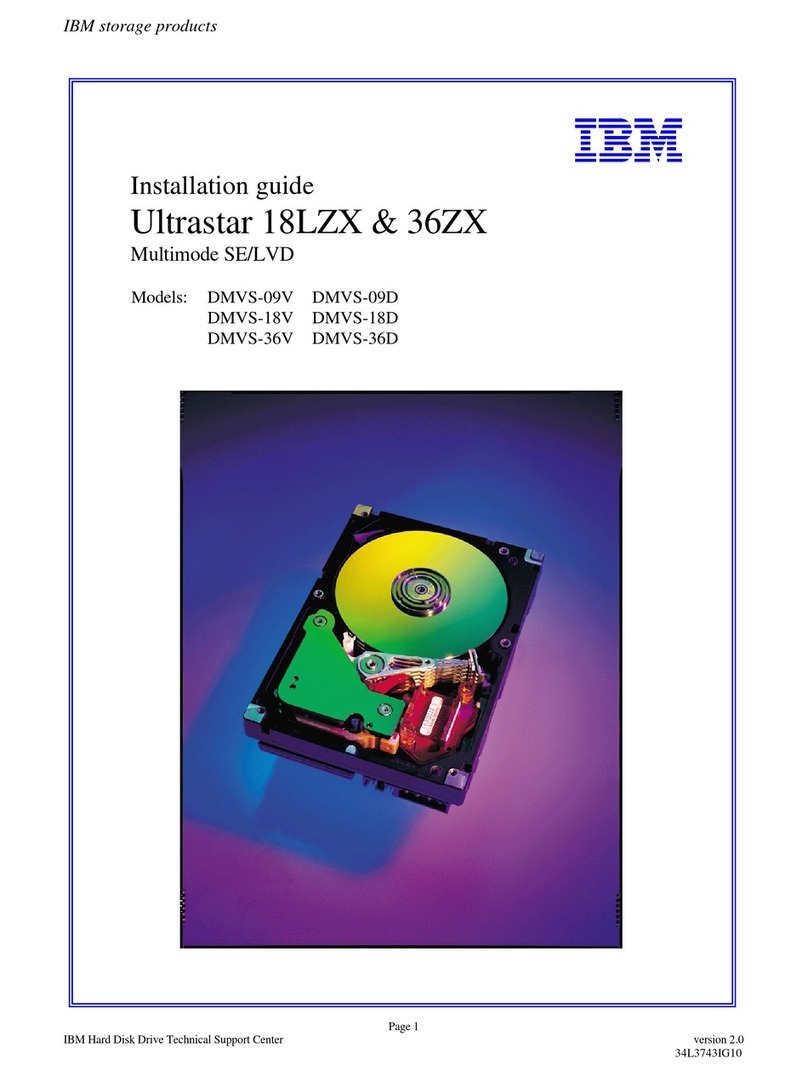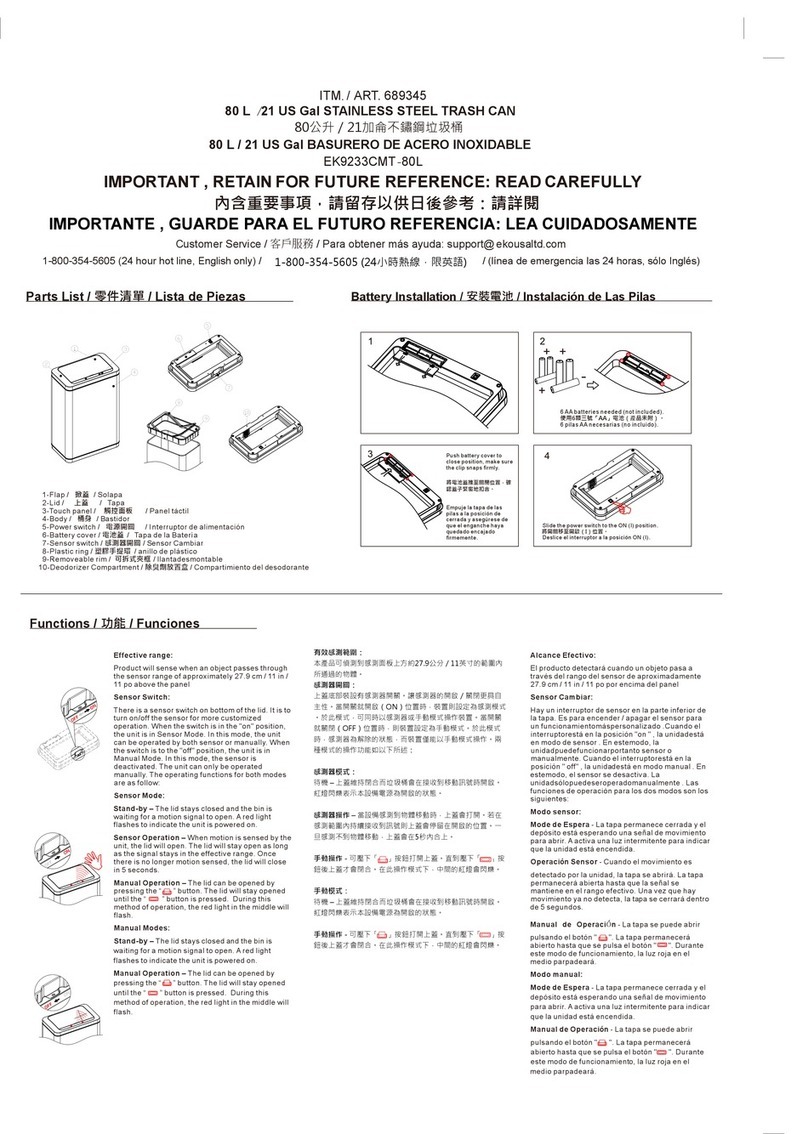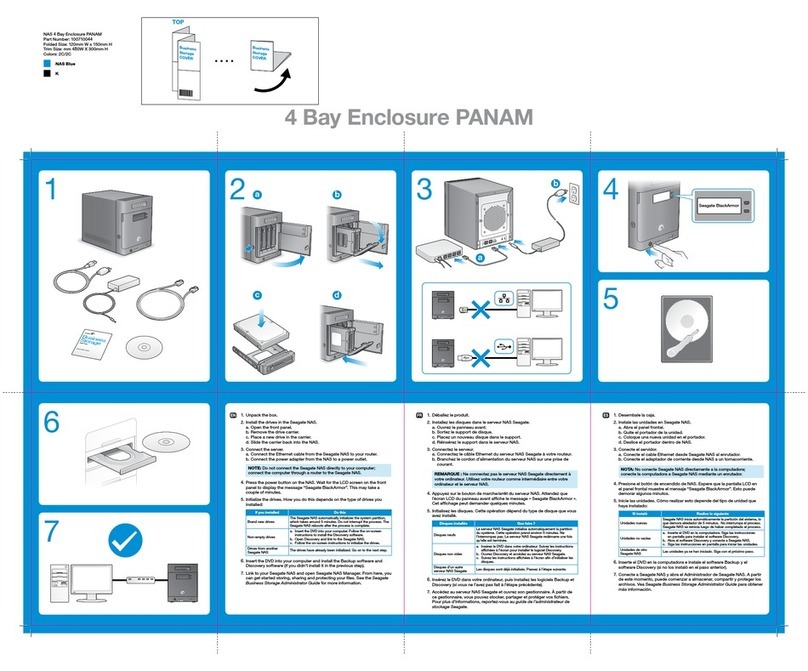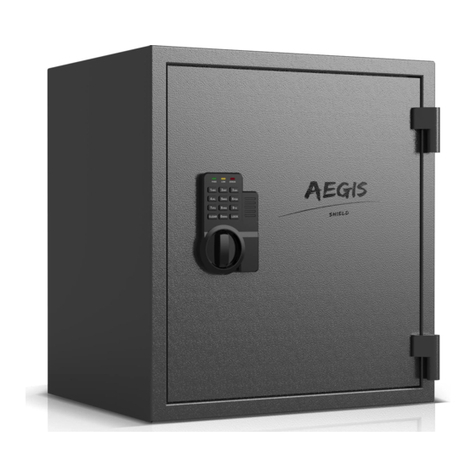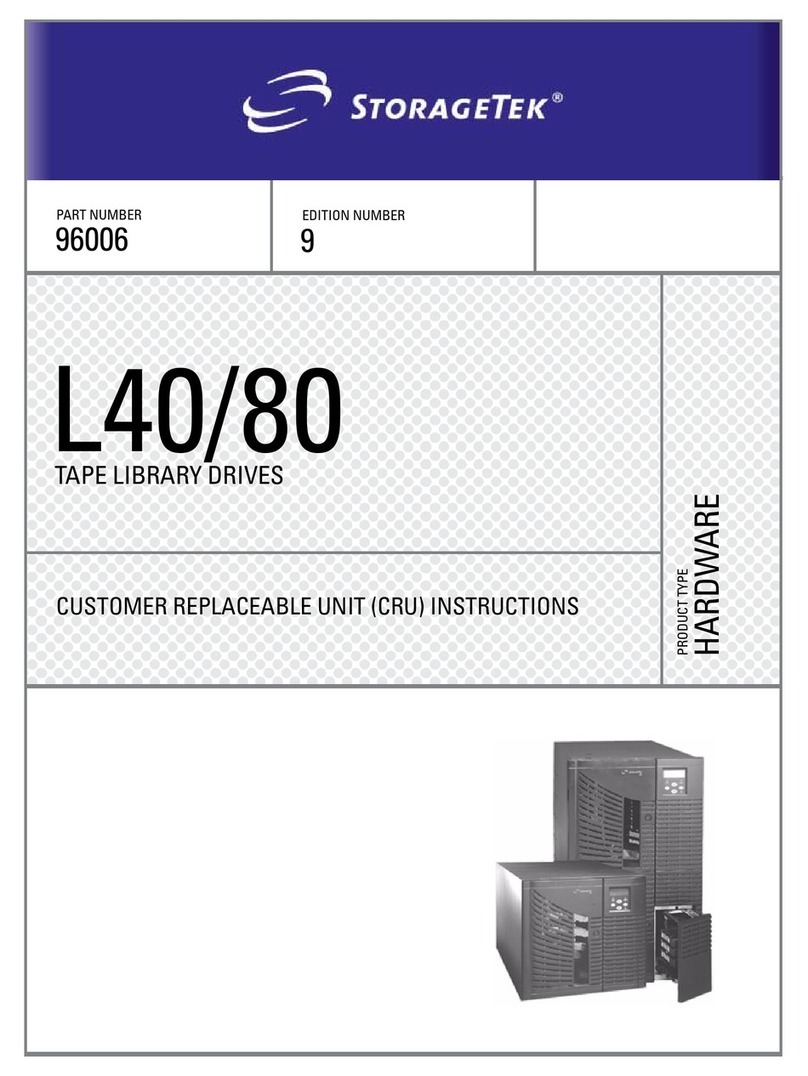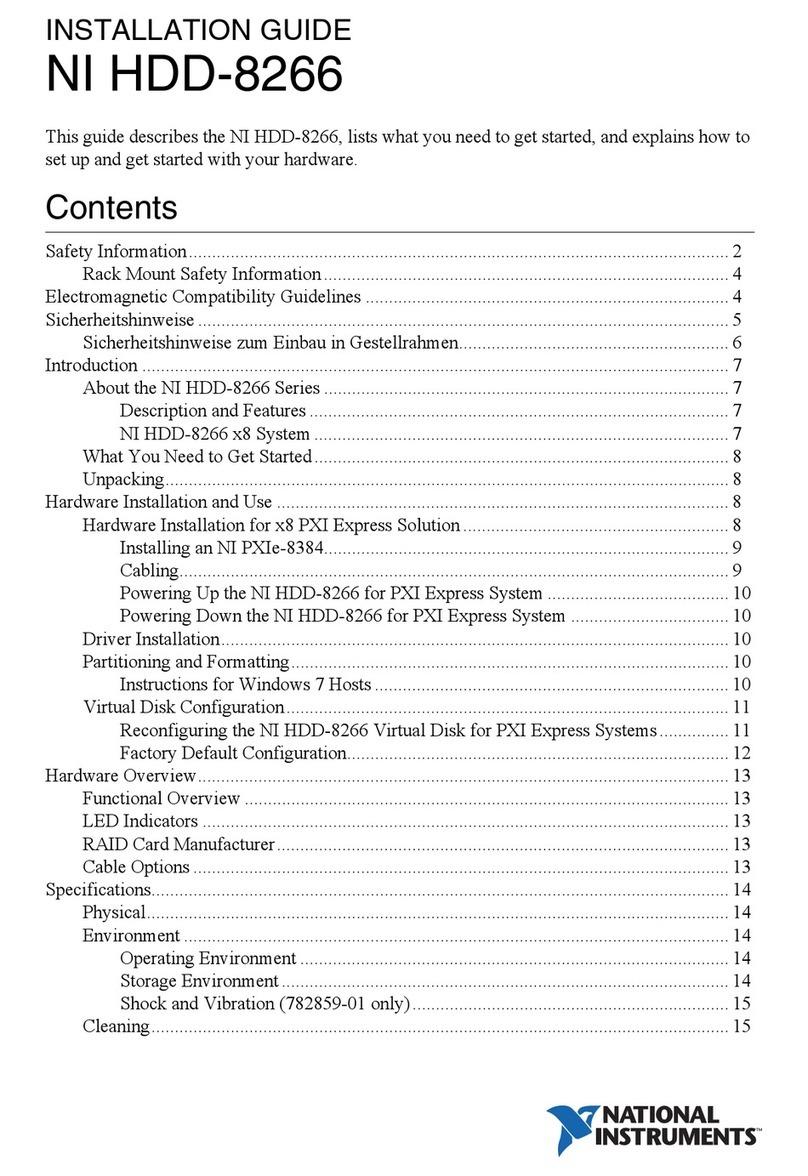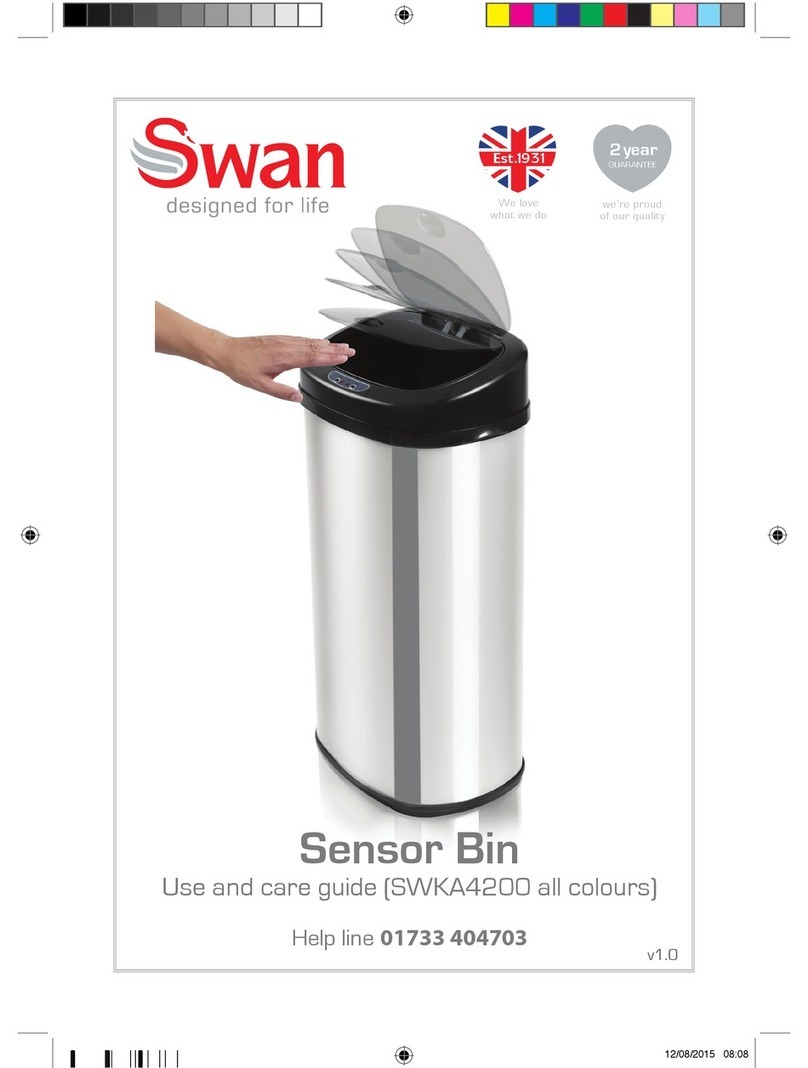Rorke Data A16F-R2431 Galaxy Raid User manual

Galaxy Raid
Model A16F-R2431
Dual Redundant Controller
4Gb FC to SATA-II RAID Subsystem
Installation and Hardware
Reference Manual
Version 0107
Version 1.0 (08, 2005)

Galaxy A16F-R2431 Installation and Hardware Reference Manual
ii
Contact Information
Americas
Rorke Data Inc
7626 Golden Triangle Drive
Eden Prairie, MN 55344
USA
Tel: +1-800 328 8147
Fax: +1-952 829 0988
http://www.rorke.com

Galaxy A16F-R2431 Installation and Hardware Reference Manual
iii
Copyright 2006
This Edition First Published 2006
All rights reserved. This publication may not be reproduced, transmitted,
transcribed, stored in a retrieval system, or translated into any language or
computer language, in any form or by any means, electronic, mechanical,
magnetic, optical, chemical, manual or otherwise, without the prior written
consent of Rorke Data , Inc.
Disclaimer
Rorke Data makes no representations or warranties with respect to the
contents hereof and specifically disclaims any implied warranties of
merchantability or fitness for any particular purpose. Furthermore, Rorke
Data reserves the right to revise this publication and to make changes from
time to time in the content hereof without obligation to notify any person of
such revisions or changes. Product specifications are also subject to change
without prior notice.
Trademarks
Galaxy and the Galaxy logo are registered trademarks of Rorke Data , Inc.
PowerPC®is a trademark of International Business Machines Corporation
and Motorola Inc.
Solaris and Java are trademarks of Sun Microsystems, Inc.
All other names, brands, products or services are trademarks or registered
trademarks of their respective owners.

Galaxy A16F-R2431 Installation and Hardware Reference Manual
iv
Warnings and Certifications
Restricted Access Location:
This equipment is intended to be installed in a RESTRICTED ACCESS LOCATION only.
Electric Shock Warning!
To Prevent Electric Shock:
Access to this equipment is granted only to trained operators and service personnel who have
been instructed of and fully understand the possible hazardous conditions and the
consequences of accessing non-field-serviceable units. For example, accessing the backplane
may cause electric shock.
FCC (applies in the U.S. and Canada)
FCC Class A Note
This device complies with Part 15 of the FCC rules. Operation is subject to
the following two conditions: (1) this device may not cause harmful
interference, and (2) this device may accept any interference received,
including interference that may cause undesired operation.
NOTE:
This equipment has been tested and found to comply with the limits for a
Class A digital device, pursuant to Part 15 of the FCC Rules. These limits
are designed to provide reasonable protection against harmful interference
when the equipment is operated in a commercial environment. This
equipment generates, uses, and can radiate radio frequency energy and, if
not installed and used in accordance with the instruction manual, may cause
harmful interference to radio communications. Operation of this equipment
in a residential area is likely to cause harmful interference in which case the
user will be required to correct the interference at his own expense.
The changes or modifications not expressly approved by the party
responsible for compliance could void the user’s authority to operate the
equipment.
WARNING:
Use only shielded cables to connect I/O devices to this equipment.

Galaxy A16F-R2431 Installation and Hardware Reference Manual
v
You are cautioned that changes or modifications not expressly approved by
the party responsible for compliance could void your authority to operate the
equipment.
CB
This device meets the requirements of the CB standard for electrical
equipment with regard to establishing a satisfactory level of safety for
persons using the device and for the area surrounding the apparatus.
This standard covers only safety aspects of the above apparatus; it
does not cover other matters, such as style or performance.
CCC for Power Supplies’ compatibility to China Compulsory Certification.
This device is in conformity with UL standards for safety.
ITE BSMI Class A, CNS 13438 (for Taiwan)
This device is in conformity with UL standards for safety.
RoHS 2002/96/EC compliant
WEEE Disposal of Old Electrical and Electronic Equipment
This device is in conformity with the EMC.
This device is in conformit
y
with the CB safet
y
specifications.

Galaxy A16F-R2431 Installation and Hardware Reference Manual
vi
Table of Contents
CONTACT INFORMATION .......................................................................................................II
COPYRIGHT 2006....................................................................................................................II
Disclaimer..........................................................................................................................III
Trademarks........................................................................................................................ III
WARNINGS AND CERTIFICATIONS .........................................................................................V
TABLE OF CONTENTS ............................................................................................................VI
REVISION HISTORY ...............................................................................................................XI
WHO SHOULD READ THIS MANUAL? .....................................................................................XI
RELATED DOCUMENTATION .................................................................................................XI
CONVENTIONS ......................................................................................................................XII
SOFTWARE AND FIRMWARE UPDATES............................................................................... XIII
CHAPTER 1 INTRODUCTION
1.1 PRODUCT OVERVIEW ..............................................................................................1-1
1.1.1 Product Introduction........................................................................................1-1
1.2 CHASSIS OVERVIEW ................................................................................................1-2
1.2.1 Front Panel Overview ......................................................................................1-2
1.2.2 Rear Panel Overview........................................................................................1-3
1.2.3 Integrated Backplane........................................................................................1-4
1.2.4 Physical Dimensions ........................................................................................1-4
1.3 MAJOR SUBSYSTEM COMPONENTS.........................................................................1-4
1.3.1 LCD Keypad Panel...........................................................................................1-5
1.3.2 Drive Tray ........................................................................................................1-5
1.3.3 MUX Kit ...........................................................................................................1-6
1.3.4 The RAID Controller Module...........................................................................1-7
1.3.5 Controller Module Interfaces...........................................................................1-8
1.3.5.1 DIMM Module.......................................................................................................1-10
1.3.6 BBU................................................................................................................1-11
1.3.7 PSUs...............................................................................................................1-12
1.3.8 Cooling Modules ............................................................................................1-13
1.4 SUBSYSTEM MONITORING.....................................................................................1-14
1.4.1 I2C bus............................................................................................................1-14
1.4.2 LED Indicators...............................................................................................1-14
1.4.3 Firmware (FW) and RAIDWatch GUI ...........................................................1-15
1.4.4 Audible Alarms...............................................................................................1-15
1.5 HOT-SWAPPABLE COMPONENTS...........................................................................1-15
1.5.1 Hot-swap Capabilities....................................................................................1-16
1.5.2 Components....................................................................................................1-16
CHAPTER 2 HARDWARE INSTALLATION
2.1 INTRODUCTION........................................................................................................2-1
2.2 INSTALLATION PREREQUISITES..............................................................................2-1
2.3 SAFETY PRECAUTIONS ............................................................................................2-2
2.3.1 Precautions and Instructions............................................................................2-2
2.3.2 Static-free Installation......................................................................................2-4
2.3.3 Preparation ......................................................................................................2-4
2.4 GENERAL INSTALLATION PROCEDURE...................................................................2-5
2.4.1 Installation Procedure Flowchart ....................................................................2-6
2.5 UNPACKING THE SUBSYSTEM..................................................................................2-6
2.5.1 Preinstalled Components..................................................................................2-7
2.5.2 Components to be Installed..............................................................................2-7

Galaxy A16F-R2431 Installation and Hardware Reference Manual
vii
2.6 HARD DRIVE INSTALLATION...................................................................................2-7
2.6.1 Hard Drive Installation Prerequisites..............................................................2-7
2.6.2 Drive Installation..............................................................................................2-8
2.7 DRIVE TRAY INSTALLATION ...................................................................................2-9
2.8 BBU INSTALLATION ..............................................................................................2-11
BBU Warnings and Precautions ....................................................................................2-12
2.9 RACKMOUNTING....................................................................................................2-13
CHAPTER 3 SUBSYSTEM CONNECTION
3.1 FC HOST CONNECTION PREREQUISITES................................................................3-1
3.1.1 Choosing the Fibre Cables......................................................................................3-1
3.1.2 FC Lasers................................................................................................................3-2
3.1.3 SFP Transceivers ....................................................................................................3-3
3.1.4 FC Port Dust Plugs.................................................................................................3-3
3.2 TOPOLOGY AND CONFIGURATION CONSIDERATIONS............................................3-3
3.2.1 Basic Configuration Rules.......................................................................................3-3
3.2.2 Fibre Channel Topologies.......................................................................................3-5
3.2.3 Host-side Topologies...............................................................................................3-5
3.2.4 Drive-side Connection.............................................................................................3-5
3.2.5 Internal Connections...............................................................................................3-5
3.2.6 Unique Identifier .....................................................................................................3-6
3.2.7 ID/LUN Mapping ....................................................................................................3-6
3.3 DIP SWITCH.............................................................................................................3-6
DIP Switch Mode Setting......................................................................................................3-8
3.4 SAMPLE TOPOLOGIES..............................................................................................3-8
3.4.1 Multiple RAID, Fault-tolerant Connection..............................................................3-8
3.4.2 Switched, Fault-Tolerant Connection....................................................................3-11
3.4.3 DAS, Fault-Tolerant Connection w/ Onboard Hub...............................................3-13
CHAPTER 4 SYSTEM OPERATION AND MONITORING
4.1 POWER ON...............................................................................................................4-1
4.1.1 Check List.........................................................................................................4-1
4.1.2 Power On Procedure........................................................................................4-2
4.1.3 Power On Status Check....................................................................................4-3
4.1.4 LCD Screen ......................................................................................................4-4
4.2 POWER OFF PROCEDURE ........................................................................................4-5
4.3 SYSTEM MONITORING OVERVIEW .........................................................................4-5
4.4 STATUS-INDICATING LEDS.....................................................................................4-7
4.4.1 LED Overview..................................................................................................4-7
4.4.2 LCD Keypad Panel...........................................................................................4-7
4.4.3 Drive Tray LEDs ..............................................................................................4-8
4.4.4 Controller Module LEDs..................................................................................4-9
4.4.4.1 Controller Status LEDs ..........................................................................................4-10
4.4.4.2 Fibre Port LEDs .....................................................................................................4-11
4.4.4.3 Restore Default LED..............................................................................................4-11
4.4.4.4 LAN Port LEDs......................................................................................................4-11
4.4.5 BBU LED........................................................................................................4-12
4.4.6 PSU LEDs.......................................................................................................4-12
4.4.7 Cooling Module LEDs....................................................................................4-13
4.5 AUDIBLE ALARM ...................................................................................................4-14
4.5.1 Failed Devices................................................................................................4-14
4.6 I2CMONITORING...................................................................................................4-14
CHAPTER 5 SYSTEM MAINTENANCE

Galaxy A16F-R2431 Installation and Hardware Reference Manual
viii
5.1 OVERVIEW ...............................................................................................................5-1
5.1.1 About Subsystem Maintenance.........................................................................5-1
5.1.2 General Notes on Component Replacement.....................................................5-2
5.2 REPLACING A CONTROLLER MODULE ...................................................................5-3
5.2.1 Considerations..................................................................................................5-3
5.2.2 Removing the Controller Module .....................................................................5-4
5.2.3 Replacing the Controller Module.....................................................................5-5
5.3 DIMMMODULE REPLACEMENT............................................................................5-7
5.3.1 DIMM Module Considerations.........................................................................5-7
5.3.2 DIMM Module Upgrade/Replacement Procedure............................................5-8
5.4 REPLACING A FAULTY BBU....................................................................................5-9
5.5 REPLACING A FAULTY PSU ..................................................................................5-12
5.5.1 PSU Overview ................................................................................................5-12
5.5.2 Replacing the PSU..........................................................................................5-13
5.6 COOLING MODULE MAINTENANCE ......................................................................5-16
5.6.1 Notes on Cooling Module Maintenance.........................................................5-16
5.6.2 Replacing a Cooling Module..........................................................................5-17
5.7 REPLACING A FAILED HARD DRIVE .....................................................................5-19
5.7.1 Hard Drive Maintenance Overview................................................................5-19
5.7.2 Replacing a Hard Drive .................................................................................5-19
5.8 REPLACING A MUX KIT........................................................................................5-21
APPENDIX A SPECIFICATIONS
A.1 TECHNICAL SPECIFICATIONS.................................................................................A-1
Environmental Specifications.......................................................................................... A-1
Power Requirements........................................................................................................ A-1
Certifications................................................................................................................... A-2
Warning Alarms .............................................................................................................. A-2
A.2 FUNCTIONAL SPECIFICATIONS...............................................................................A-2
Configuration Specifications........................................................................................... A-2
Architectural Specifications ............................................................................................ A-2
A.3 DRIVE TRAY SPECIFICATIONS ...............................................................................A-3
A.4 POWER SUPPLY SPECIFICATIONS...........................................................................A-3
A.5 COOLING MODULE SPECIFICATIONS.....................................................................A-4
A.6 RAID MANAGEMENT.............................................................................................A-4
A.7 FAULT TOLERANCE MANAGEMENT.......................................................................A-5
APPENDIX B SPARE PARTS AND ACCESSORIES
B.1 SPARE PARTS ..........................................................................................................B-1
B.2 ACCESSORIES.......................................................................................................... B-2
APPENDIX C PINOUTS
C.1 SFP CONNECTOR PINOUTS ....................................................................................C-1
C.2 COM1 CABLE:DB9 AUDIO JACK Y-CABLE PINOUTS..........................................C-3
C.3 COM2 UPSCABLE:DB9 AND AUDIO JACK PINOUTS..........................................C-4
C.4 IFT-9011 NULL MODEM ........................................................................................C-5
C.5 LAN PORT PINOUTS...............................................................................................C-6
C.6 POWER CONNECTORS.............................................................................................C-6
C.7 CONNECTOR TYPE AND OTHER INFORMATION ....................................................C-6
C.7.1 Connector Type and Supported Connections .................................................. C-6
APPENDIX D UNINTERRUPTIBLE POWER SUPPLY
D.1 UNINTERRUPTIBLE POWER SUPPLY OVERVIEW ...................................................D-1
D.2 COMPATIBLE UPS SUPPLIES..................................................................................D-1

Galaxy A16F-R2431 Installation and Hardware Reference Manual
ix
D.3 SERIAL COMMUNICATION CABLE..........................................................................D-1
D.4 CONNECTING THE UPS TO THE SUBSYSTEM .........................................................D-2
D.4.1 Connect the PSU Module Power Cords ..........................................................D-2
D.4.2 Set the Baud Rate.............................................................................................D-2
D.4.3 Connect COM2................................................................................................D-2
D.5 POWER ON..............................................................................................................D-2
D.6 UPS STATUS MONITORING ....................................................................................D-3
D.6.1 Normal Operational Status..............................................................................D-3
D.6.2 UPS Messages.................................................................................................D-3
D.6.3 UPS Message Summary...................................................................................D-5

Galaxy A16F-R2431 Installation and Hardware Reference Manual
x
Safety Precautions
Precautions and Instructions
Prior to powering on the subsystem, ensure that the correct power range is being
used.
The Galaxy subsystem comes with sixteen (16) drive bays. Leaving any of these
drive bays empty will greatly affect the efficiency of the airflow within the
enclosure, and will consequently lead to the system overheating, which can
cause irreparable damage.
If a module fails, leave it in place until you have a replacement unit and you are
ready to replace it.
Airflow Consideration: The subsystem requires an airflow clearance, especially
at the front and rear.
Handle subsystem modules using the retention screws, eject levers, and the metal
frames/face plates. Avoid touching PCB boards and connector pins.
To comply with safety, emission, or thermal requirements, none of the covers or
replaceable modules should be removed. Make sure that during operation, all
enclosure modules and covers are securely in place.
Be sure that the rack cabinet into which the subsystem chassis will be installed
provides sufficient ventilation channels and airflow circulation around the
subsystem.
Provide a soft, clean surface to place your subsystem on before working on it.
Servicing on a rough surface may damage the exterior of the chassis.
If it is necessary to transport the subsystem, repackage all disk drives separately.
Dual redundant controller models come with two controller modules that must
be installed into the subsystem. Single controller modules come with a single
controller module and a metal sheet is placed over the lower controller bay at the
rear of the subsystem. Since single controller modules cannot be upgraded, this
metal sheet should NEVER be removed.
ESD Precautions
Observe all conventional anti-ESD methods while handling system
modules. The use of a grounded wrist strap and an anti-static work pad are
recommended. Avoid dust and debris in your work area.

Galaxy A16F-R2431 Installation and Hardware Reference Manual
xi
About This Manual
This manual:
Introduces the Galaxy RAID subsystem series.
Describes all the active components in the subsystem.
Provides recommendations and details about the hardware installation
process.
Briefly describes how to monitor the subsystem.
Describes how to maintain the subsystem.
This manual does not:
Describe components that are not user-serviceable.
Describe the configuration options of firmware, using terminal
emulation programs, or the RAIDWatch GUI software that came with
your subsystem.
Give a detailed description of the RAID controllers embedded within
the subsystem.
Revision History
Initial release
Who should read this manual?
This manual assumes that its readers are experienced with computer
hardware installation and are familiar with storage enclosures.
Related Documentation
Firmware Operation Manual
RAIDWatch User’s Manual
These two documents can be found in the product utility CD included with
your subsystem package.

Galaxy A16F-R2431 Installation and Hardware Reference Manual
xii
Conventions
Naming
From this point on and throughout the rest of this manual, the Galaxy series
is referred to as simply the “subsystem” or the “system” and Galaxy is
frequently abbreviated as “ES.”
Lists
Bulleted Lists: Bulleted lists are statements of non-sequential facts. They
can be read in any order. Each statement is preceded by a round black dot
“•.”
Numbered Lists: Numbered lists are used to describe sequential steps you
should follow in order.
Important information that users should be aware of is indicated with the
following icons:
NOTE:
These messages inform the reader of essential but non-critical
information. These messages should be read carefully as any directions
or instructions contained therein can help you avoid making mistakes.
CAUTION!
Cautionary messages should also be heeded to help you reduce the
chance of losing data or damaging the system.
IMPORTANT!
The Important messages pertain to use the Galaxy subsystem introduced
in this manual.
WARNING!
Warnings appear where overlooked details may cause damage to the
equipment or result in personal injury. Warnings should be taken
seriously.

Galaxy A16F-R2431 Installation and Hardware Reference Manual
xiii
Software and Firmware Updates
Please contact your system vendor for the latest software or firmware
updates.
Problems that occur during the updating process may cause unrecoverable
errors and system down time. Always consult technical personnel before
proceeding with any firmware upgrade.
NOTE:
The firmware version installed on your system should provide the
complete functionality listed in the specification sheet/user’s manual.
We provide special revisions for various application purposes.
Therefore, DO NOT upgrade your firmware unless you fully understand
what a firmware revision will do.

Product Overview 1-1
Chapter 1
Introduction
1.1 Product Overview
1.1.1 Product Introduction
This chapter briefly introduces the Galaxy (ES) A16F Fibre-to-SATA
(Serial ATA) subsystem. The drive bays support SATA-II (Serial ATA)
disk drives. The 16-bay model comes with four (4) FC-4G host channels via
eight (8) SFP LC-type host ports and sixteen (16) hot-swappable SATA
disk drives in a 3U chassis. The subsystem is powered by Galaxy’s
proprietary ASIC400 RAID
engine, which features
expanded bandwidth and
RAID6 configurations. The
RAID controller comes
with a pre-installed
memory buffer of up to
2GB in size for transient handling of I/Os. Each FC-4G channel is capable
of delivering data at the speed of 4Gbit/s. An onboard hub (bypass) can be
used to connect the corresponding FC channels on partner controllers
together to facilitate fault-tolerant connections. A common backplane
provides fault-tolerant data paths between the controller pair and other
components, such as disk drives, power supplies, etc. The subsystem is
ideal for high performance and high availability storage applications, and is
highly flexible via the additional FC-4G host ports.
Data cached in memory is protected by a Li-Ion battery backup unit (BBU)
that comes with an embedded EEPROM for storing service data. If the one-
year life expectancy of a BBU is reached, system administrators will be
notified by event messages. The BBU is independently accessible and hot-
replaceable.
Two (2) cooling modules protect the subsystem from overheating, and two
(2) hot-swappable power supply unit (PSU) modules ensure constant power
to the subsystem. The modular design of the subsystem ensures reliability
and the ease of subsystem maintenance.
Fi
g
ure 1-1: Galax
y
A16F Subs
y
stem

Galaxy A16F-R2431 Installation and Hardware Reference Manual
1-2 Chassis Overview
NOTE:
On receiving and unpacking your subsystem, please check the package
contents against a printed copy of Unpacking List included in kit. If any
modules are missing or appear damaged, please contact your subsystem
vendor immediately.
1.2 Chassis Overview
The A16F RAID storage subsystem is housed in a 3U metal chassis made of
compact steel. The chassis can be divided into the front and the rear
sections, which are respectively accessed through front and rear panels.
Separately-purchased rackmount rails are available for installation into 19”
standard racks or cabinets.
Please acquaint yourself with the locations of individual components before
proceeding with hardware installation.
NOTE:
Components accessed through the front panel are referred to as “Front
Panel Components” and components accessed through the rear panel
are referred to as “Rear Panel Components.”
1.2.1 Front Panel Overview
The front section of the subsystem features a 4x4 layout for sixteen (16)
3.5-inch drives. One of the two forearm handles comes with an LCD
keypad panel. The LCD panel provides easy access to the subsystem’s
monitoring and configuration utilities.
The front view of the A16F subsystem is shown in Figure 1-2. Descriptions
of each front panel component are given below:
Figure 1-2: Subsystem Front View

Chapter 1: Introduction
Chassis Overview 1-3
Drive bays with drive tray canisters: The front section of the
subsystem houses sixteen (16) drive bays.
LCD keypad panel and handles: The forearm handles on the sides
of the subsystem provide an easier means for installing or
retrieving the chassis into and out of a rack or cabinet. The left-
side handle comes with a 2 rows x 16 characters-wide LCD keypad
panel that can be used to access firmware configuration and
monitoring utilities. (Please refer to Section 1.3.1)
1.2.2 Rear Panel Overview
The rear panel of the dual-controller subsystem is shown in Figure 1-3. The
rear panel provides access to all components located in the rear section of
the chassis. A description of each rear panel component is given below:
Figure 1-3: Subsystem Rear View
•RAID controller modules:Each controller module contains a main
circuit board with a DDR RAM DIMM module mounted on it as cache
buffer. (See Section 1.3.3.)
About the dual-redundant RAID controllers in A16F-R2431:
For the subsystem featuring redundant RAID controllers, the upper
controller module is identified as Controller A, while the lower
controller module is identified as Controller B. By factory default,
management tools such as the LCD keypad panel, hyper terminal and
RAIDWatch®manager recognize Controller A as the primary
controller and Controller B as the secondary controller. The Drive
Busy LED on each drive tray indicates the ownership of the managing
controller. For details, please refer to Chapter 4.
If Controller A fails for any reason (hardware error, software error,
removal from system, etc.), then Controller B will take over and
become the primary/managing controller.
If the failed Controller A restarts and successfully returns to service, it
will temporarily become the secondary controller.

Galaxy A16F-R2431 Installation and Hardware Reference Manual
1-4 Major Subsystem Components
Once the subsystem is rebooted, all system configurations revert to the
default stage so that Controller A becomes the primary controller and
Controller B the secondary controller.
BBUs: Two (2) BBUs come as standard equipment for dual-
controller A16F-R2431. Each BBU sustains cache memory for
days during a power outage to prevent data loss. These BBUs are
hot-swappable. (See Section 1.3.6.)
PSUs: The hot-swappable, load-sharing PSUs convert 110V or
240V input to 3.3V, 5V, or 12V for subsystem components.
Subsystem power-on/off is controlled by a power switch on each
PSU. (See Section 1.3.7.) These modules contain the subsystem’s
cooling modules. The redundant cooling modules ventilate the
chassis with an airflow traveling from the front to the rear. (See
Section 1.3.8.)
1.2.3 Integrated Backplane
An integrated backplane board separates the front and rear sections of the
chassis. This circuit board provides logic level signals and low voltage
power paths. Thermal sensors and I2C devices are implemented to detect
system temperature and PSU/cooling module presence signals. This board
contains no user-serviceable components.
1.2.4 Physical Dimensions
The A16F subsystem comes in an enhanced 3U chassis with the following
dimensions:
With handles: 488.6mm (W) x 131mm (H) x 504.3mm (L) (19 x
5.2 x 21 inches)
Without handles: 445mm x 130mm x 488.2mm (17.5 x 5.1 x 19.2
inches)
1.3 Major Subsystem Components
The subsystem chassis houses many active components and most of them
can be accessed through either the front or rear panel. The modular
enclosure design facilitates the ease of installation and maintenance
procedures. Hot-swap mechanisms are incorporated to eliminate power
surges and signal glitches that might occur while removing or installing
these modules. Each component is further described below:

Chapter 1: Introduction
Major Subsystem Components 1-5
1.3.1 LCD Keypad Panel
PN: GAL-9273CHandLLCD
The LCD keypad panel consists of a 2-rows x 16-characters LCD screen
with push buttons and LED status-indicators. The LCD keypad panel
provides full access to RAID configuration utilities and monitoring
functions. After powering up the subsystem, the initial screen will display
the subsystem’s model name. A different name can be assigned to the
subsystem for ease of identification in a topology consisting numerous
arrays.
1.3.2 Drive Tray
Figure 1-4: Drive Tray Front View
PN: GAL-9273CDTray
The subsystem comes with sixteen (16) drive trays (see Figure 1-4)
designed to accommodate separately-purchased, standard 1-inch pitch, 3.5-
inch SATA disk drives. Two (2) LEDs on the drive tray’s front bezel
indicate drive status. A rotary lock on each drive tray prevents unintentional
ejection, and a convenient release button releases the drive tray from
chassis.
WARNING!
Be careful not to warp, twist, or contort the drive tray in any way (e.g., by
dropping it or resting heavy objects on it). The drive tray has been
customized to fit into the drive bays in the subsystem. If the drive bay
superstructure is deformed or altered, the drive trays may not properly fit
into the drive bay.
The subsystems are housed in an enclosure that is 4 bays wide and 4 bays
high. When viewing from the front, drive bay IDs are numbered from Slot 1
to Slot 16 (see Figure 1-5), from left to right, and then from top to bottom.

Galaxy A16F-R2431 Installation and Hardware Reference Manual
1-6 Major Subsystem Components
TIPS:
Tray numbering sequence is important if one disk drive fails and
needs to be replaced. Replacing a wrong drive can fatally fail a
RAID3/5 array. Failing two members destroys a RAID6 array.
Figure 1-5: Drive Bay Numbering Sequence
1.3.3 MUX Kit
Figure 1-6: MUX Kit
P/N: GAL-9273S1N2S1S (MUX kit)
GAL-9273S1DT2S1S (Drive tray with a pre-installed MUX kit)
The MUX kit facilitates the installation of SATA-II hard drives in the dual-
controller subsystems. The subsystem comes with MUX-enabled drive trays
as standard parts. Separately purchased and independently installed SATA
MUX kits or MUX-enabled drive trays are also available as spare parts.
When installing disk drives into drive trays, the connectors at the back of
disk drives must be properly mated to the SATA connectors of the MUX
kit. When installed into the enclosure, the SATA connectors on the MUX
kits will mate with the corresponding connectors on the backplane board.
NOTE:
The MUX board facilitates cross-controller access to an individual
disk drive and therefore is a necessary component for the A16F-
R2431. All drive trays come with the MUX board.

Chapter 1: Introduction
Major Subsystem Components 1-7
WARNING!
The MUX kits are small, delicate components that must be handled with
care. If the need should arise, handle the MUX board by the board edges
and avoid touching PCB traces and connector pins.
1.3.4 The RAID Controller Module
Figure 1-7: RAID Controller Module
PN: GAL-83AF24RE16M5 (w/ a 512MB DIMM)
The RAID controller module within your subsystem contains a controller
board, a BBU adapter board, an interface faceplate, and a pre-installed DDR
RAM DIMM module. The BBU adapter board is mounted on top of the
main circuit board and is not user-serviceable. The DDR RAM DIMM
socket is strategically placed on an easily accessible location. (See Figure
1-7) A BBU slot on the top center of the controller module receives a BBU
module.
The controller module contains no user-serviceable components. Except
when installing/upgrading the cache memory inside or replacing a failed
controller, the controller module should never be removed from the chassis.
D
o
c
k
D
WARNING!
Although the RAID controller can be removed, the only time you should
touch the controller itself is to install/upgrade the memory modules. The
RAID controller is built of sensitive components and unnecessary
tampering can damage the controller.
This manual suits for next models
1
Table of contents
Other Rorke Data Storage manuals
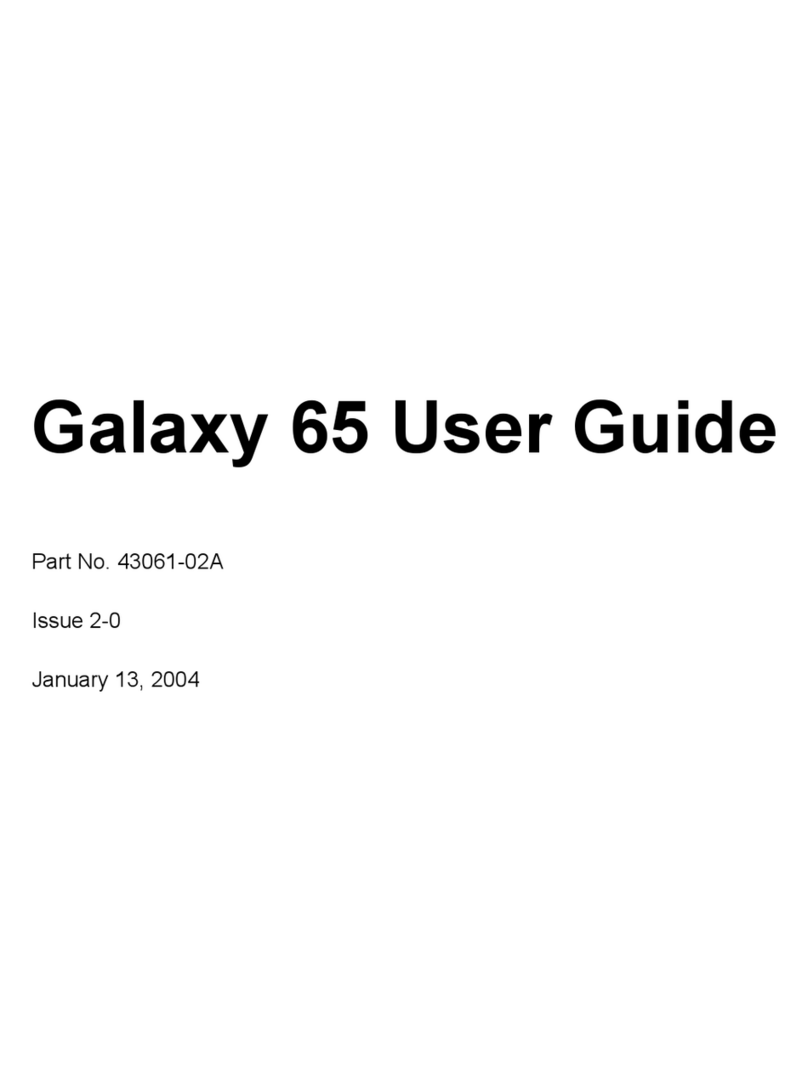
Rorke Data
Rorke Data The Galaxy 65 User manual
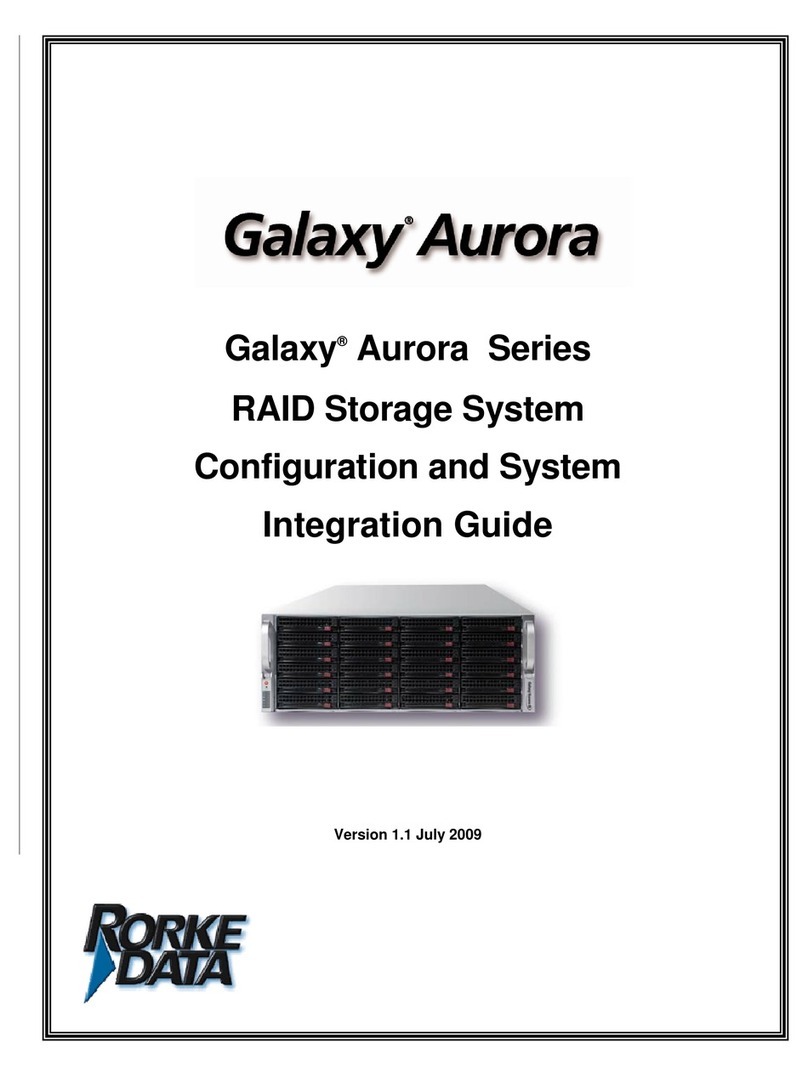
Rorke Data
Rorke Data Galaxy Aurora Series Quick setup guide

Rorke Data
Rorke Data Galaxy GHDX2 ADA User manual
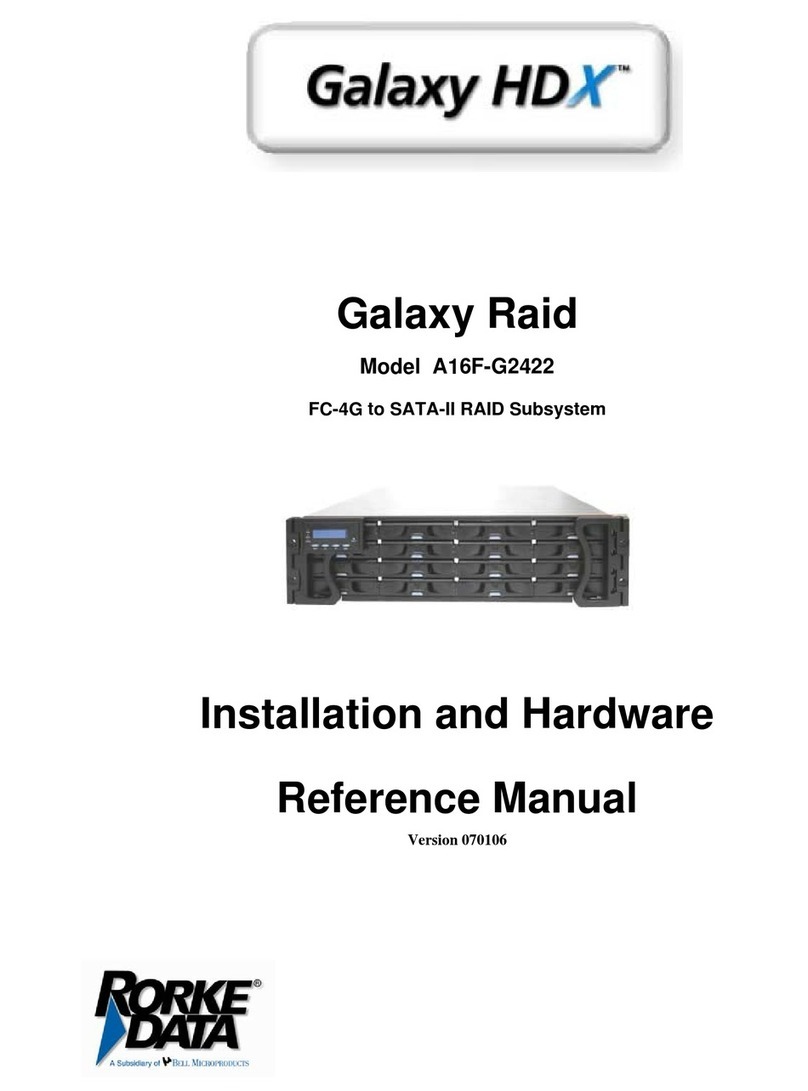
Rorke Data
Rorke Data Galaxy A16F-G2422 User manual
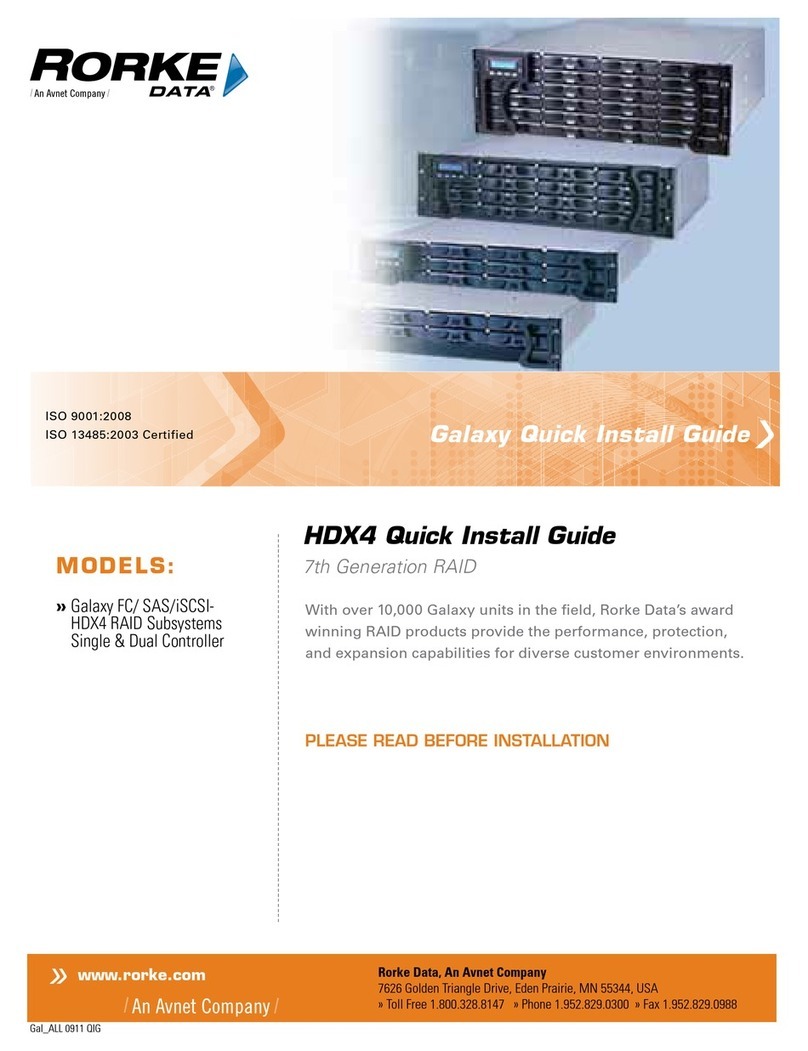
Rorke Data
Rorke Data Galaxy HDX4 User manual

Rorke Data
Rorke Data Galaxy Aurora Series Quick setup guide
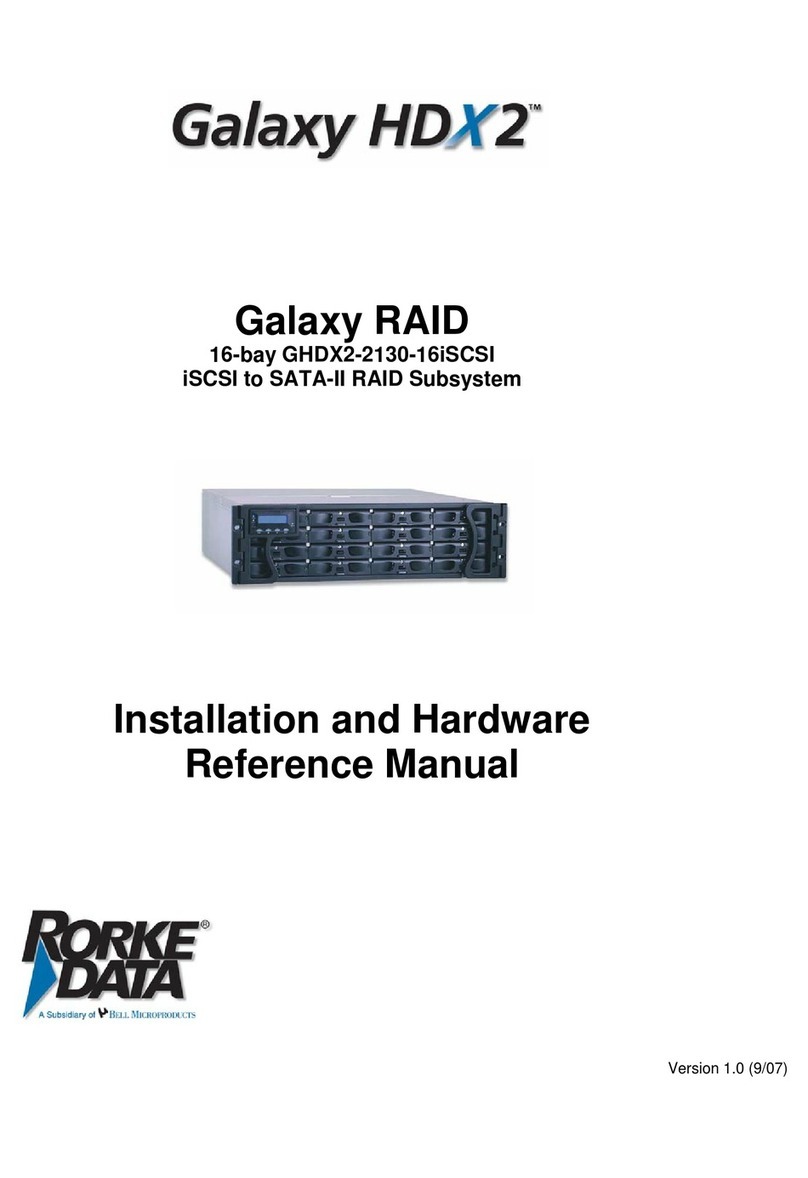
Rorke Data
Rorke Data Galaxy RAIDGHDX2-2130-16iSCSI User manual
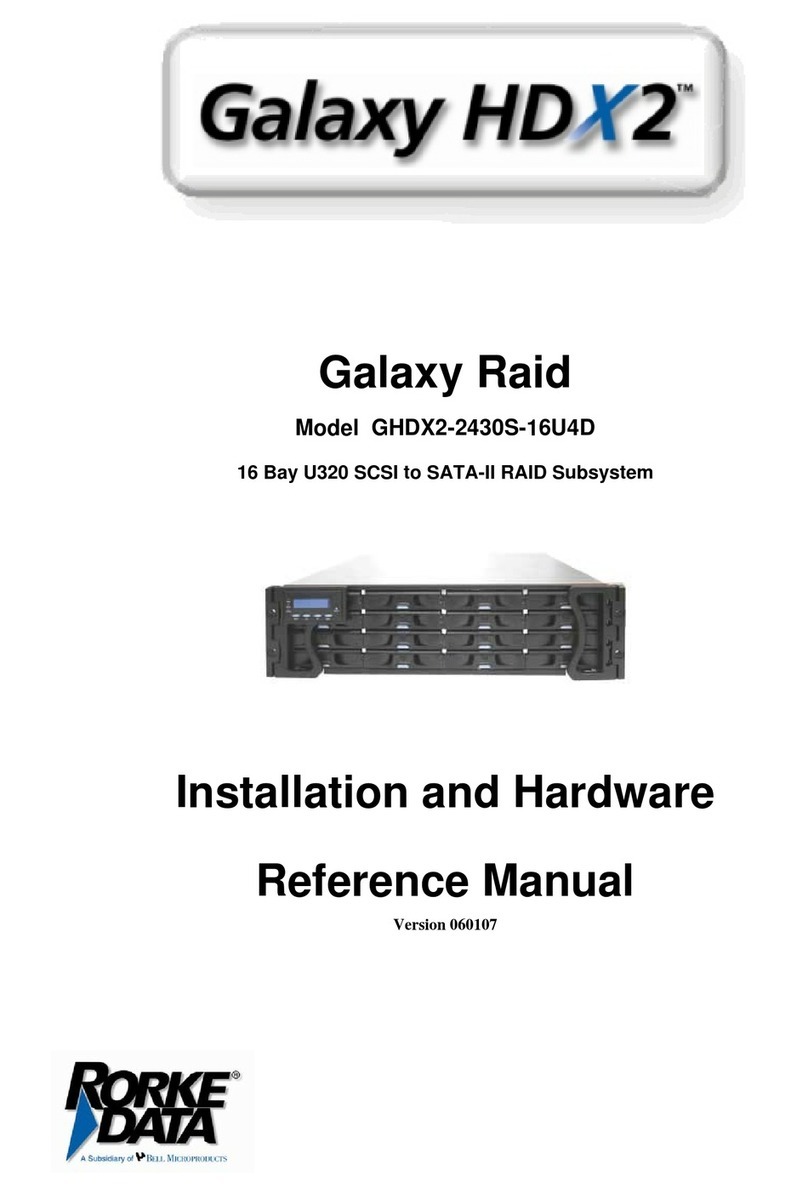
Rorke Data
Rorke Data Galaxy HDX2-2430S-16U4D User manual
